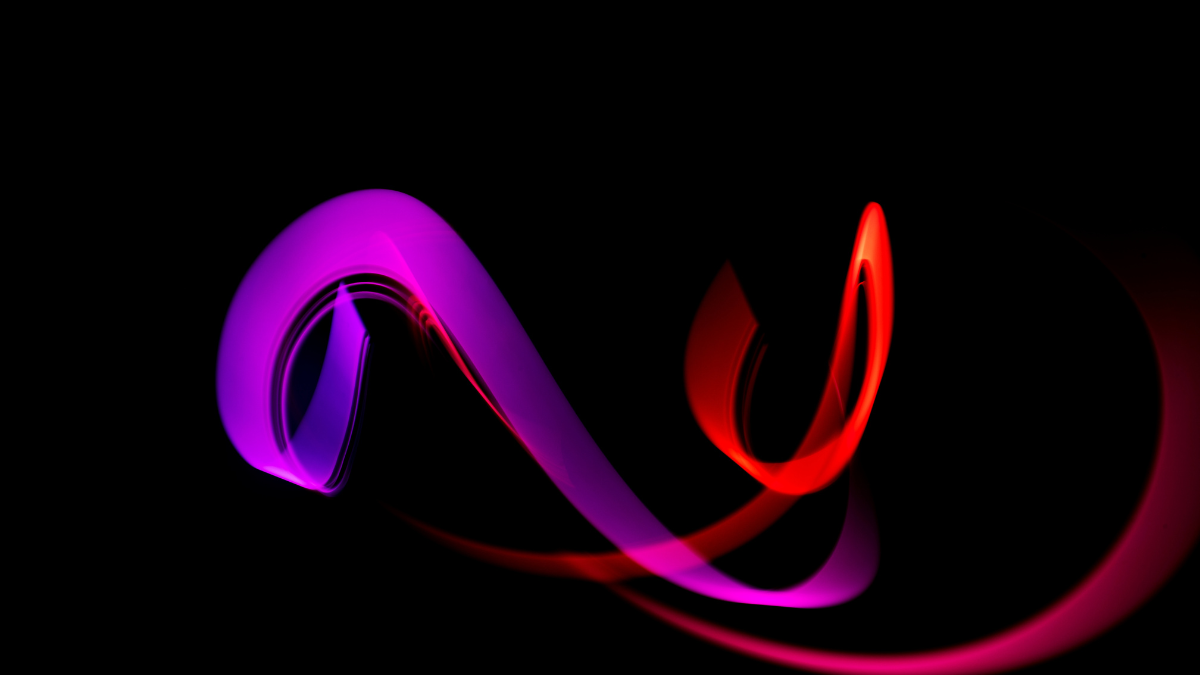TECH
E Ink Tablet: Everything You Need to Know Before Buying

In an age of vibrant LCD screens and blazing OLED displays, one understated piece of tech is quietly gaining momentum for its eye comfort, battery life, and minimalist appeal—the E Ink tablet. Whether you’re a digital minimalist, a voracious reader, a note-taker, or someone who values long battery life and reduced screen glare, an E Ink tablet might just be the device you’ve been missing.
This comprehensive guide will explore everything you need to know about E Ink tablets—from what they are and how they work, to the top use cases, comparisons with traditional tablets, and the best E Ink tablets currently available.
What Is an E Ink Tablet?
An E Ink tablet is a digital device that uses electronic ink (E Ink) technology instead of traditional backlit displays. E Ink technology mimics the appearance of ink on paper, using microcapsules filled with black and white particles that rearrange when electrical fields are applied.
Unlike LCD or OLED screens, E Ink screens don’t emit light directly. Instead, they reflect ambient light, which makes them:
-
Much easier on the eyes during extended use
-
Readable in bright sunlight
-
Power-efficient (some models last weeks on a single charge)
An E Ink tablet usually comes with a stylus or pen for writing, annotating, sketching, and highlighting, making them ideal for note-taking and digital planning.
E Ink Tablet vs Regular Tablet: Key Differences
| Feature | E Ink Tablet | Regular Tablet (LCD/OLED) |
|---|---|---|
| Display Type | E Ink (electrophoretic display) | LCD, LED, or OLED |
| Eye Comfort | Very high – paper-like experience | Lower – causes more eye strain |
| Battery Life | Days to weeks | Hours to a day |
| Color Support | Mostly monochrome, some color | Full color support |
| Speed & Responsiveness | Slower refresh rate | Very fast refresh and animations |
| Use Case | Reading, note-taking, sketching | Video, games, productivity apps |
| Backlight | Optional front light | Backlit screens |
Why Choose an E Ink Tablet?
Here are some compelling reasons why E Ink tablets are worth considering:
1. Eye Health
Unlike backlit screens, E Ink displays reduce blue light exposure and eye fatigue. For people who read or write for long hours, this is a game-changer.
2. Distraction-Free Work
E Ink tablets often run stripped-down software without social media or entertainment distractions. This helps students, writers, and professionals stay focused.
3. Note-Taking and Sketching
With high precision styluses, E Ink tablets provide a near-paper experience. You can:
-
Write handwritten notes
-
Annotate PDFs
-
Create diagrams or mind maps
-
Sync notes to the cloud
4. Digital Reading and eBooks
These tablets double as advanced eReaders that can handle multiple file types:
-
EPUB
-
PDF
-
MOBI
-
TXT
-
Word documents
You can read thousands of books, make highlights, and take notes without switching devices.
5. Battery Life
Most E Ink tablets can last days or even weeks on a single charge because E Ink only consumes power when changing the display, not while displaying static content.
Best Use Cases for E Ink Tablets
E Ink tablets appeal to various user types. Here’s how different people might use them:
-
Students: Digital note-taking in lectures, PDF annotations, research papers
-
Writers: Drafting manuscripts, journaling, brainstorming without distractions
-
Professionals: Signing documents, making business notes, organizing to-do lists
-
Artists: Creating grayscale sketches and illustrations
-
Minimalists: Streamlined productivity without the clutter of modern apps
Top Features to Look For in an E Ink Tablet
If you’re planning to purchase an E Ink tablet, here are key features to evaluate:
1. Screen Size
Common sizes range from 6 to 13 inches. For reading, 6–8 inches may suffice, but for writing and annotating, go for 10 inches or larger.
2. Stylus Support
Most E Ink tablets come with a stylus, but look for:
-
Pressure sensitivity
-
Tilt detection
-
Palm rejection
-
Pen tips that simulate pencil or pen feel
3. Software Ecosystem
Check whether the device supports:
-
Cloud sync (Google Drive, Dropbox)
-
Handwriting recognition
-
Calendar and to-do apps
-
3rd-party file formats and app integration
4. Connectivity
Wi-Fi and Bluetooth are standard, but some models also offer USB-C for file transfer and charging.
5. Backlight or Front Light
For nighttime use, a front-lit display (adjustable brightness and warmth) is essential.
Popular E Ink Tablets on the Market
Here are some of the most acclaimed E Ink tablets currently available:
1. reMarkable 2
-
Size: 10.3 inches
-
Stylus: Included, with pressure sensitivity
-
Features: Minimal UI, great for focused writing and sketching
-
Battery: Up to 2 weeks
-
Drawbacks: Limited app ecosystem
2. BOOX Note Air3 / Air3 C
-
Size: 10.3 inches
-
Stylus: Included, with multiple tools and customization
-
Features: Runs Android, supports Kindle and Google Play apps
-
Color Display: (Air3 C only) E Ink Kaleido 3 technology
-
Drawbacks: Slightly more expensive
3. Kindle Scribe
-
Size: 10.2 inches
-
Stylus: Included
-
Features: Optimized for reading with note-taking capabilities
-
Battery: Long-lasting
-
Drawbacks: Less flexible outside the Amazon ecosystem
4. Supernote A5 X
-
Size: 10.3 inches
-
Stylus: Ceramic nib for paper-like feel
-
Features: Excellent note-taking, smooth handwriting experience
-
Drawbacks: Slower hardware than some competitors
The Rise of Color E Ink Tablets
Until recently, E Ink tablets were almost entirely monochrome. But with the development of Kaleido Plus and Kaleido 3, we now have color E Ink tablets. These offer:
-
Limited but useful color support for diagrams, graphs, web pages
-
Improved visual clarity while maintaining low power usage
Examples include the BOOX Tab Ultra C and PocketBook InkPad Color.
Limitations of E Ink Tablets
Despite their many advantages, E Ink tablets aren’t perfect. Here are a few caveats:
-
Slower refresh rate: Not suitable for video or fast-paced apps
-
Limited color depth: Even color E Ink is not as vibrant as OLED
-
Higher cost: Premium models can be more expensive than budget iPads
-
Fewer apps: App support is limited, although Android-based models offer more flexibility
E Ink Tablet vs eReader: Are They the Same?
While all E Ink tablets can serve as eReaders, not all eReaders are full-fledged E Ink tablets.
| Device Type | Primary Use | Writing Support | Example |
|---|---|---|---|
| eReader | Reading only | No or limited | Kindle Paperwhite |
| E Ink Tablet | Reading + Writing | Yes (stylus) | reMarkable, BOOX |
If your goal is simply to read books, a basic eReader might suffice. But if you want to take notes, organize thoughts, or draw, an E Ink tablet offers far more functionality.
Conclusion
The E Ink tablet stands out as a powerful tool for anyone seeking a focused, eye-friendly, and distraction-free digital experience. Designed to mimic the look and feel of real paper, these tablets excel in reading, note-taking, sketching, and document management—without the glare and blue light of traditional screens.
With long battery life, minimalist interfaces, and stylus support, E Ink tablets are perfect for students, writers, professionals, and digital minimalists. While they may not replace traditional tablets for multimedia tasks, their niche functionality makes them an ideal companion for productivity and creativity.
If your priorities include eye comfort, efficient reading, or handwritten digital notes, an E Ink tablet is not just a smart choice—it’s the right tool for the job.
TECH
Exploring the Chemical Compound “HCOOCH CH2 H2O”: Structure, Properties, and Applications

The notation HCOOCH CH2 H2O appears to represent a chemical formula or fragment, possibly relating to an ester or carboxylate compound with some attached functional groups and water. While the exact formula as written is ambiguous and unconventional in standard chemical notation, it likely refers to a compound involving:
A formate group (HCOO–),
A methane or methylene group (CH or CH2),
And possibly water (H2O).
To understand the chemistry implied by this formula, we need to analyze each component and explore related compounds with similar substructures. This will provide insight into their chemical behavior, industrial relevance, and biological importance.
1. Breaking Down the Formula: Interpreting “HCOOCH CH2 H2O”
Let’s dissect the notation piece-by-piece:
HCOO–: This group is the formate ion, the conjugate base of formic acid (HCOOH). Formate is a simple carboxylate anion with one carbon atom bonded to two oxygens (one double bonded, one single bonded and carrying a negative charge).
CH or CH2: These fragments represent carbon atoms bonded to hydrogen atoms. CH indicates a methine group (carbon bonded to one hydrogen and three other groups), while CH2 represents a methylene group (carbon bonded to two hydrogens and two other groups).
H2O: Water, either as a solvent or as a molecule potentially involved in hydration or solvation.
Given the fragments, one possible interpretation is that the formula represents methyl formate hydrate or a related ester molecule with water. Methyl formate has the formula HCOOCH3, which is a formate ester.
Alternatively, it could be describing a hydrated intermediate or compound related to formaldehyde (CH2O) and formic acid/formate.
2. Methyl Formate: The Likely Core Compound
Chemical Structure and Formula
Methyl formate (HCOOCH3) is an ester formed by the reaction of formic acid and methanol. Its molecular formula is C2H4O2, often written as HCOOCH3, emphasizing the formate and methyl groups.
The formate part (HCOO–) is the acyl portion derived from formic acid.
The methyl group (CH3) is attached via an oxygen atom forming the ester linkage.
Physical and Chemical Properties
Appearance: Colorless liquid with a fruity odor.
Boiling Point: About 31–32°C, making it quite volatile.
Solubility: Miscible with many organic solvents and moderately soluble in water.
Reactivity: Methyl formate can hydrolyze in the presence of water and acid/base catalysts to give formic acid and methanol.
Uses and Applications
Solvent: Used in paints, coatings, and adhesives due to its good solvency.
Chemical intermediate: Precursor in the manufacture of formamide and other chemicals.
Fuel additive: Sometimes used as a biofuel component or fuel additive.
Hydration and Water Interaction
While methyl formate itself is an ester and does not typically exist as a hydrate, in aqueous environments it can participate in hydrolysis:
HCOOCH3+H2O→HCOOH+CH3OH\mathrm{HCOOCH_3} + \mathrm{H_2O} \rightarrow \mathrm{HCOOH} + \mathrm{CH_3OH}
Water (H2O) thus plays a key role in breaking the ester bond to regenerate formic acid and methanol.
3. Formaldehyde (CH2O) and Its Relation to the Formula
The fragment CH2O corresponds to formaldehyde, a simple aldehyde with significant industrial and biological importance. Given the proximity in the formula “HCOOCH CH2 H2O,” it’s possible this notation attempts to relate formate or methyl formate with formaldehyde and water.
Formaldehyde Properties and Uses
Structure: Simplest aldehyde with formula CH2O.
Physical State: Colorless gas or aqueous solution called formalin.
Reactivity: Highly reactive, used in polymer synthesis and as a disinfectant.
Hydration: In water, formaldehyde exists partly as methanediol (CH2(OH)2), a hydrate form.
Chemical Relevance to Formate Esters
Formaldehyde can participate in various reactions involving formic acid or formate esters, such as:
Cannizzaro reaction: Disproportionation of formaldehyde in basic medium to methanol and formate ion.
Formose reaction: Polymerization of formaldehyde under basic conditions to form sugars.
This chemistry highlights interactions between formaldehyde (CH2O), formate species, and water.
4. Hydrates and Hydration in Organic Chemistry
The “H2O” in the formula might also suggest hydration — the addition of water molecules to a compound.
Hydrates in Esters and Aldehydes
Esters: Generally do not form stable hydrates but can hydrolyze with water.
Aldehydes: Can form geminal diols (hydrates) upon reaction with water, as with formaldehyde.
This hydration changes chemical properties such as reactivity and solubility, which is critical in biological and industrial contexts.
5. Biological and Industrial Significance of Formate and Related Compounds
Formate in Biological Systems
Formate (HCOO–) is involved in many metabolic pathways:
One-carbon metabolism: Donates formyl groups for biosynthesis of nucleotides and amino acids.
Microbial respiration: Some bacteria use formate as an energy source.
Formaldehyde and Derivatives in Industry
Formaldehyde and its hydrated forms are key intermediates in:
Resin production: Urea-formaldehyde and phenol-formaldehyde resins.
Disinfection and preservation: Due to antimicrobial properties.
6. Summary: Connecting the Pieces of “HCOOCH CH2 H2O”
Although the exact notation HCOOCH CH2 H2O is not a standard chemical formula, it appears to reference chemical fragments or species related to:
Formate esters (like methyl formate) — HCOOCH3,
Formaldehyde (CH2O) and its hydration,
And water (H2O) playing roles in hydrolysis or hydration.
Understanding the chemistry behind each fragment provides insights into important reactions involving esters, aldehydes, and aqueous environments, which are relevant across organic synthesis, industrial chemistry, and biochemistry.
Additional Notes
If you encounter this formula in a specific context (e.g., a reaction scheme or material safety data sheet), it might be a shorthand or partial formula requiring contextual clues for full interpretation.
Conclusion
The informational keyword “HCOOCH CH2 H2O” touches on fundamental chemical building blocks—formate esters, formaldehyde, and water—that are central to organic chemistry and many industrial applications. By breaking down the components and exploring related compounds, we gain a clearer understanding of their properties, reactions, and uses.
From methyl formate’s role as a solvent and intermediate to formaldehyde’s pivotal place in polymer production and disinfection, these molecules underscore the intricate interplay of structure and function in chemistry. Water, as a ubiquitous solvent and reactant, completes the picture by influencing hydrolysis, hydration, and biochemical processes.
TECH
Your Topics, Multiple Stories: Unpacking the Power of Narrative Across Diverse Subjects

In a world saturated with content, how we tell a story often matters more than what the story is. Whether you’re a content creator, marketer, educator, or casual blogger, you’ve likely heard the advice: “Tell a story.” But what if you have multiple topics to cover? What if you’re tasked with creating multiple stories across different subjects?
This brings us to the core concept of “your topics, multiple stories.” It’s not just a content strategy—it’s a philosophy that enables you to engage diverse audiences, drive SEO success, and create emotionally resonant content across categories.
In this guide, we’ll explore how to master multi-topic storytelling, apply it across various fields, and use it as a tool for long-term success.
What Does “Your Topics, Multiple Stories” Mean?
At its core, “Your topics, multiple stories” refers to the method of crafting numerous narratives around varied themes, subjects, or content areas. It’s the art of contextualizing information in ways that connect with different audiences—often using storytelling as the vehicle.
For example:
A tech blog might explore AI from the perspective of business, healthcare, and ethics.
A travel site can tell different stories from the same destination: cultural, culinary, and adventurous.
It’s not just about writing more—it’s about writing better by using stories to illuminate complex or diverse topics.
Why Storytelling Matters in a Multi-Topic World
Humans are hardwired for stories. Neuroscience shows that narratives activate parts of the brain associated with emotion, memory, and empathy. When content includes storytelling elements—even for highly technical topics—it becomes more memorable, relatable, and impactful.
Key Benefits of Storytelling:
Information Retention: Stories help people remember facts better.
Broader Appeal: Different narratives attract different reader personas.
SEO Benefits: More engaging content leads to longer session durations and lower bounce rates.
When you have multiple topics to cover, storytelling helps unify and personalize them, turning a potentially fragmented content experience into something cohesive and dynamic.
How to Build Stories Around Different Topics
The ability to turn abstract or complex ideas into compelling stories is an art—and a science.
Step 1: Identify the Core Message of Each Topic
Every story needs a heart. Whether you’re talking about renewable energy, cryptocurrency, or mental health, find the key takeaway you want to convey.
Step 2: Choose a Narrative Format
There are several storytelling structures you can use:
Problem → Solution
Before → After
Journey/Quest
Failure → Redemption
Case Study Format
Step 3: Pick a Character or Point of View
Good stories need a protagonist. This could be:
A customer
An employee
A product
An idea (personified)
Step 4: Use Relatable Language and Emotions
Even if you’re writing for a technical audience, emotion matters. Add human elements like struggle, discovery, and triumph.
Step 5: Integrate Data Thoughtfully
Data lends credibility, but it becomes powerful when embedded in a narrative.
Example:
Instead of saying “25% of small businesses fail in their first year,” say:
“Like many startups, Jane’s boutique faced a steep learning curve. In fact, 1 in 4 small businesses don’t make it past year one—but Jane had a plan…”
Examples of Multi-Topic Storytelling in Action
Let’s explore how storytelling can enhance content across different subjects.
Health & Wellness
Topic: Benefits of yoga
Story 1: A working mom finds relief from back pain.
Story 2: An elderly man uses yoga to regain mobility post-surgery.
Story 3: A teen discovers mindfulness through school yoga classes.
Technology
Topic: Artificial Intelligence
Story 1: A startup uses AI to improve supply chain logistics.
Story 2: A doctor leverages AI diagnostics in rural clinics.
Story 3: Ethical concerns over AI facial recognition software.
Finance
Topic: Budgeting tools
Story 1: A college student tracks their expenses to afford tuition.
Story 2: A young family uses an app to save for their first home.
Story 3: A retiree manages fixed income with digital planners.
SEO Advantages of Multi-Story Content
Multi-topic, multi-story content isn’t just compelling—it’s also SEO-friendly. Here’s why:
🔸 Keyword Clustering
By telling different stories around the same topic, you naturally incorporate semantic keywords and LSI (Latent Semantic Indexing) terms.
🔸 Dwell Time and Engagement
Stories keep people reading longer, reducing bounce rate and increasing average time on page—both positive SEO signals.
🔸 Internal Linking Opportunities
Different story sections create logical opportunities to link to related pages, improving site structure and crawlability.
🔸 Enhanced Backlink Potential
Rich, multi-faceted content is more likely to be cited by other blogs, news sources, or academic institutions.
Tools and Techniques for Structuring Multiple Stories
➤ Use Subheadings and Anchors
Help users navigate between different narratives using clear subheadings, bullet points, and table of contents features.
➤ Visual Aids
Timelines for journeys
Infographics summarizing each story
Story cards for quick reads
➤ Modular Content Blocks
Write each story or narrative as a standalone module, which can be repurposed in social media, newsletters, or ebooks.
Challenges in Multi-Topic Storytelling
While the benefits are significant, multi-topic storytelling does pose certain challenges:
Consistency
Different stories may vary in tone, complexity, or audience level. Writers must ensure style consistency throughout.
Clarity
Too many narratives can overwhelm readers. It’s essential to maintain clarity by linking each story back to the core message.
SEO Cannibalization
Covering similar topics in multiple ways can sometimes lead to keyword cannibalization. Avoid this by strategically varying keyword usage and internal linking.
Case Studies: Multi-Story Content Done Right
National Geographic
Topic: Climate Change
Stories:
An Arctic expedition measuring ice melt
Indigenous communities adapting ancient methods for modern sustainability
Result: Engaging, educational content that brings climate science to life.
HubSpot Blog
Topic: Email Marketing
Stories:
A SaaS company’s A/B test results
An e-commerce brand’s abandoned cart recovery campaign
A nonprofit using email segmentation to improve donor engagement
Result: Practical, real-world applications that support product marketing.
Best Practices for Writers and Content Creators
Here’s how to consistently excel at multi-topic, multi-story content:
✅ Know Your Audience(s)
Different stories serve different personas. Segment accordingly.
✅ Balance Detail and Brevity
Each story should be rich but not bloated. Use crisp language and break up long paragraphs.
✅ Plan Before Writing
Create a content map for each topic and its potential storylines.
✅ Reuse Strategically
Turn each story into standalone assets for email, social, or lead magnets.
✅ Optimize On-Page SEO
Use schema markup for FAQs, proper H1-H6 hierarchy, and meta descriptions for each section.
The Future of Multi-Topic Storytelling
The digital content landscape is evolving toward personalization, interactivity, and multimedia storytelling. In the near future, expect to see:
🔮 AI-Generated Personal Narratives
Using AI to generate custom versions of stories for different reader personas.
📱 Immersive Formats
AR/VR storytelling modules embedded in editorial content.
🧠 Emotion-Driven Algorithms
Platforms that recommend content based on emotional tone rather than just topics or keywords.
The brands and creators who master the art of multi-topic storytelling today will be those who dominate tomorrow’s content-driven economy.
Conclusion
The phrase “your topics, multiple stories” is more than a tagline—it’s a blueprint for building content that resonates. By embracing narrative diversity, content creators can make even the most complex or dry subjects engaging, relatable, and SEO-rich.Whether you’re crafting blog posts, scripting videos, building newsletters, or launching an educational platform, multiple stories across your topics help you:
Reach broader audiences
Establish emotional connections
Enhance search visibility
Drive long-term brand value
Remember: Every topic has more than one story. The best content creators know how to find and tell them all.
TECH
Logo Alight Motion PNG Image: A Complete Guide for Designers and Creators

In today’s fast-paced digital content world, video editing has become a vital part of marketing, education, and entertainment. One app that has revolutionized mobile video editing is Alight Motion. Known for its intuitive interface and powerful animation features, Alight Motion has become the go-to application for many creators across the globe. Along with its growing popularity comes the increasing demand for branded visual elements like the logo Alight Motion PNG image.
In this comprehensive , we explore the significance of the Alight Motion logo, what makes the PNG version valuable, where to find it, how to use it legally and creatively, and why it’s an essential asset for content creators.
What Is the Alight Motion Logo?
The Alight Motion logo is a minimal yet powerful visual that symbolizes creativity and fluid motion. Most commonly, the logo features a spiral or swirl symbol—representing dynamic energy and seamless animation. It’s usually designed in shades of green and teal, reflecting freshness and creativity, paired with modern typography.
This logo is widely recognized among editors, animators, and influencers.
What Is a PNG Image and Why Is It Important?
One of the key features that make PNG images valuable for design is their ability to support transparent backgrounds, which means you can overlay them seamlessly on other media without a visible white box or color block around the logo.
Benefits of Using PNG for Logos:
Transparency: Makes layering easy in graphics and videos.
High Quality: Maintains the sharpness of edges and color integrity.
Versatility: Can be used across multiple platforms, from websites to video thumbnails.
Edit-Friendly: Easier to manipulate in software like Photoshop, Canva, or mobile design apps.
This makes the logo Alight Motion PNG image a perfect resource for content creators who want to include branding without compromising on aesthetics.
Common Use Cases for the Logo Alight Motion PNG Image
Let’s explore how creators commonly use the Alight Motion logo in PNG format:
1. YouTube Tutorials and Thumbnails
Creators teaching others how to use Alight Motion often use the logo in their thumbnails and video intros. This boosts click-through rates and instantly communicates what the video is about.
2. Social Media Branding
Freelancers or digital agencies offering video editing services frequently include software logos in their promotional content. Using the Alight Motion logo shows their proficiency with the tool.
3. Presentations and Portfolios
When showcasing editing skills or app features in a pitch deck or portfolio, including the logo helps identify the software being discussed.
4. Watermark and Attribution
Some creators use the Alight Motion logo subtly as a watermark to show the tool used to create a piece of content, without marking it as their own logo.
Where to Find High-Quality Logo Alight Motion PNG Images
Finding a clean, high-resolution version of the logo with a transparent background can be tricky if you don’t know where to look. Here are some reliable options:
1. Official Website or Press Kit
Always check the official Alight Motion website for media assets. While not all companies publish logos for public use, some may offer press kits containing PNGs.
2. Wikimedia Commons
This is a great source for public domain or fair-use logos. For example:
https://commons.wikimedia.org/wiki/File:Alight_Motion_Logo.png
3. Design Asset Platforms
Websites like:
SeekLogo
Freepik
LogoDownload
PNGTree
…often host logo PNG files. Always verify the licensing and attribution requirements before use.
4. Make Your Own PNG
If you find a high-quality JPG version, you can use tools like remove.bg, Canva, or Photoshop to erase the background and save the logo as a PNG.
How to Use the Alight Motion Logo Responsibly
While it’s tempting to grab and use logos freely, it’s essential to understand the implications of trademark and copyright law.
✅ Allowed Uses:
Educational videos and tutorials
Reviews and commentary
News articles and informative blogs
Academic or personal use
❌ Not Allowed:
Creating a fake brand or misleading users
Selling merchandise with the logo
Using the logo as your business identity
Modifying the logo in a way that distorts the original branding
Whenever possible, credit the source of the image and clarify that Alight Motion is a registered trademark of its respective owners.
Tips for Editing and Incorporating the Logo
Once you have a logo Alight Motion PNG image, how you use it can make or break the visual quality of your project.
Here are some practical tips:
Maintain Aspect Ratio: Always resize proportionally to avoid stretching or squishing the logo.
Use Drop Shadows: To make the logo stand out on videos or presentations, subtle shadows can enhance visual depth.
Avoid Clutter: Don’t crowd the logo with text or other elements. Give it breathing room.
Stick to Brand Colors: If you’re using other brand logos, match the design theme for a cohesive look.
How to Convert Other Formats to PNG
If you find the Alight Motion logo in SVG, JPG, or WEBP formats, here’s how to convert it:
Online Converters:
Convertio
Zamzar
CloudConvert
Software Tools:
Adobe Photoshop: Open > Remove Background > Export as PNG
GIMP: Open Image > Layer Transparency > Export as PNG
Illustrator: Open SVG > Export > Save for Web (PNG)
Enhancing Your Projects with the Alight Motion Logo
Adding the Alight Motion logo can subtly showcase your editing tools, especially if you’re building a portfolio or social media presence. It’s a sign of transparency and professionalism when used correctly.
Imagine a video tutorial titled “Smooth Zoom Transition in Alight Motion”—a clear, centered Alight Motion logo on the thumbnail not only adds visual credibility but also improves user engagement by assuring the viewer the content is directly related to the app.
conclusion
The logo Alight Motion PNG image is a small but powerful resource for designers, video editors, and digital content creators. Whether you’re teaching, showcasing, or reviewing Alight Motion, having a clean and transparent logo makes your content look polished and credible.
Just remember:
Use only high-quality PNGs with transparent backgrounds.
Respect copyright and trademark guidelines.
Incorporate the logo tastefully in your content.
Give credit when using third-party sources.
If you’re a creator working with Alight Motion, having the PNG version of its logo in your toolbox can greatly elevate your content’s professionalism. Consider bookmarking this guide or saving your favorite versions of the logo to ensure you’re always ready to build stunning, brand-aware content.
-

 HEALTH2 weeks ago
HEALTH2 weeks agoMega-Personal.net Health Archives: The Ultimate Guide to Health Information and Resources
-

 FASHION1 week ago
FASHION1 week agoWhy Fashion Is Important to People: A Deep Dive Into Its Cultural, Psychological, and Social Impact
-

 NEWS1 day ago
NEWS1 day agoForestry Development Authority: Guardians of Our Forests
-

 BLOG5 months ago
BLOG5 months agoExploring the Revolutionary Potential of New Software 418DSG7
-

 CRYPTO3 weeks ago
CRYPTO3 weeks agoCrypto30x.com: A Comprehensive Investigation Into the 30X Returns Crypto Platform
-

 CRYPTO3 weeks ago
CRYPTO3 weeks agoLessInvest.com Crypto: A Comprehensive Guide to Smart Cryptocurrency Investing
-

 NEWS3 weeks ago
NEWS3 weeks agoTecnoregio News: Your Ultimate Guide to Innovation, Industry Updates, and Regional Technology Insights
-

 CRYPTO5 months ago
CRYPTO5 months agoWhich Crypto Has 1000x Potential? A 2025 Investor’s Deep Dive into the Next Crypto Explosion
